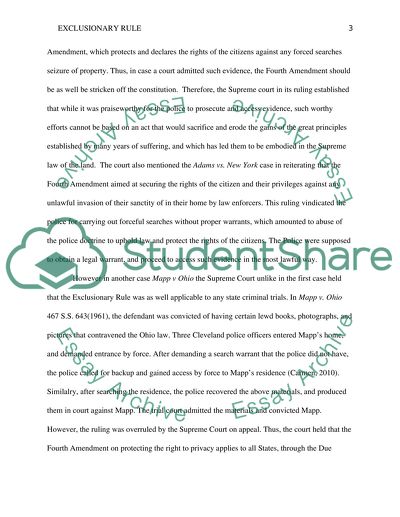Exclusionary Rule by the Supreme Court Case Study. Retrieved from https://studentshare.org/law/1470559-exclusionary-rule-by-the-supreme-court
Exclusionary Rule by the Supreme Court Case Study. https://studentshare.org/law/1470559-exclusionary-rule-by-the-supreme-court.


